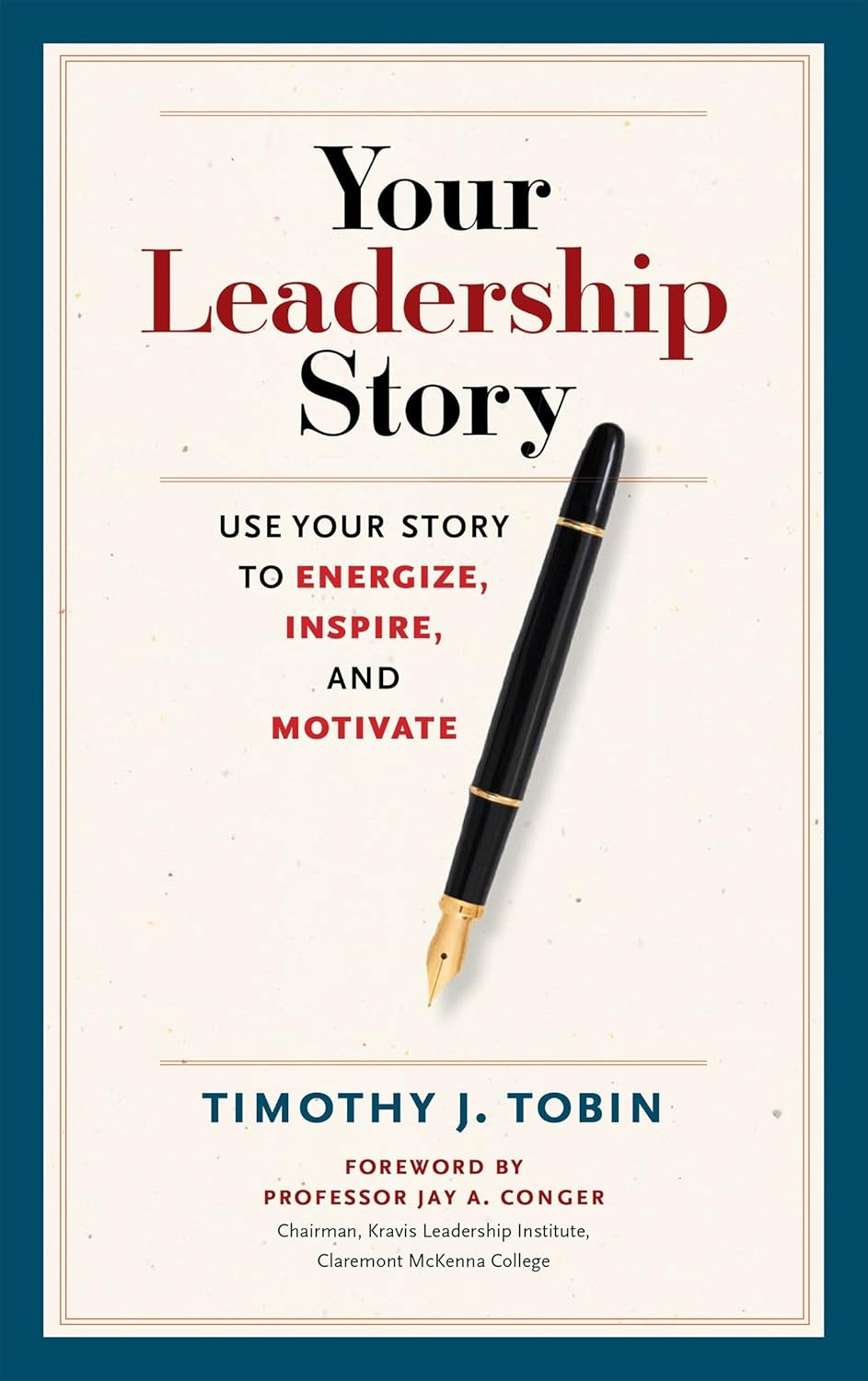Book Review of "Your Leadership Story: Use Your Story to Energize, Inspire, and Motivate," by Timothy Tobin, 2015. San Francisco, CA: Berrett-Koehler Publishers. Cloth, 155 pages.
This is certainly a time for leaders.
Timothy Tobin reminds the reader that “leadership begins with you” and then provides many hints and some good guidance to get us into that leadership mode. Though this book is written for managers to use, it is a good guide for social workers, street helpers of the homeless, counselors, nonprofit agency managers and others. Teachers, school administrators, and professors can make good use of the book also.
Leadership is essential across society. Somebody has to lead the way. Of course, teachers are natural leaders—or should be—and this guidance is a good reminder for us. We are the ones who teach students to read, to write, to reason, to analyze, and to compute.
Tobin also reminds readers that people who want others to move onward and upward need to know “who they want to be” as leaders to be truly effective. Sorting out different styles and making leadership our own are important steps. He uses four main chapters to make his points: 1) Just What Is Leadership? 2) Understanding and Aligning Your Leadership Story; 3) The Narrative Arc; and 4) The Art of Communicating Your Leadership Story.
Tobin shares his wisdom about the world of leadership and gives us some good examples to consider. He says that too often managers and leaders think too much about the project or the product being advanced or developed in that project. Rarely do some of them think about how their leadership messages sound to those who work for them or with them.
Although the story that serves as an example throughout the book is from the corporate world, it can be interpreted easily as it applies to education. Confidence in who we are, clarity in how we communicate, and firm comprehension of how others look at us based on the quality of our leadership. The author uses the example of one manager throughout the book and how he grows over time from the guidance and mentorship provided to him. Important to remember is that our careers form a narrative.
Careers of social workers and street helpers also depend on good communication skills, setting reasonable priorities, and of course helping others. Social justice is built into everything we are doing. People who believe in social justice almost always create a legacy in their works, jobs, volunteering, writing, mentoring, and other activities relating to who they have decided to be and the ways in 3which they have agreed to lead.
I recommend this book because of the importance of the actual story of leadership we live. As in many cases of management ideas and strategies, we can translate the messages from the workplace into the school, from the school into the street intervention, and from counseling into housing strategies. This is good reading for on the bus or train, helpful hints for looking at ways to maintain our confident approaches to decision making, and beneficial reading related to our professional development.
There is also some good information that could be shared with student leaders, also. Mentors of young people—and advisors to groups—can relate to the notion that others will look at these leaders through the lens of a “story” quite often. They will relay the narrative to others.
Knowing that their leadership actions, decisions, and comments will be remembered by others is a crucial piece of information for all leaders. Think about that legacy. Or it will be designed and showcased differently than you want in the future by those who remain in place while you go on to other realms.
Yes, it is important to participate in molding your legacy!
If only our elected officials could remember this last bit of wisdom.





